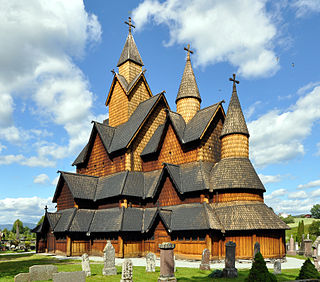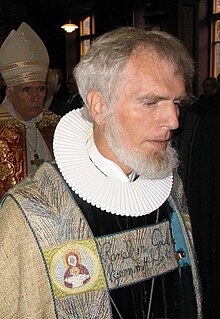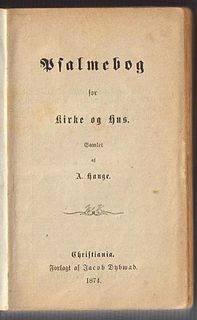
The Church of Norway is an evangelical Lutheran denomination of Protestant Christianity and by far the largest Christian church in Norway. The church became the state church of Norway around 1020 and was established as a separate church intimately integrated with the state as a result of the Lutheran reformation in Denmark–Norway that broke ties with the Holy See in 1536–1537; the King of Norway was the church's head from 1537 to 2012. Historically the church was one of the main instruments of royal power and official authority, and an important part of the state administration; local government was based on the church's parishes with significant official responsibility held by the parish priest. In the 19th and 20th centuries it gradually ceded most administrative functions to the secular civil service. The modern Constitution of Norway describes the church as the country's "people's church" and requires the King of Norway to be a member. It is by far the largest church in Norway; until the mid 19th century the state church had a near-total monopoly on religion in Norway; it was the only legal church in Norway, membership was mandatory for every person residing in the kingdom and it was forbidden for anyone else than the official priests of the state church to authorise religious meetings; after the adoption of the 1845 Dissenter Act, the state church retained its legally privileged position, while minority religious congregations such as Catholics were allowed to establish themselves in Norway, legally termed "dissenters". Church employees were civil servants from the Reformation until 2017, when the church became a legal entity separate from the state administration. The church of Norway is mentioned specifically in the constitution and is subject to the Church Act. Municipalities are required by law to support activities of parishes and to maintain church buildings and church yards. Other religious communities are entitled to the same level of government subsidies as the Church of Norway.

Anders Hovden was a Norwegian Lutheran clergyman, hymnwriter poet and author.

Religion in Norway is dominated by Lutheran Christianity, with 68.7% of the population belonging to the Evangelical Lutheran Church of Norway in 2019. The Catholic Church is the next largest Christian church at 3.1%. The unaffiliated make up 18.3% of the population. Islam is followed by 3.4% of the population.
Trond Hans Farner Kverno is a contemporary Norwegian composer. He received degrees in church music, music theory and choir direction from the Norwegian Academy of Music. He is known for his liturgical compositions.

Børre Arnold Knudsen (1937–2014) was a Norwegian Lutheran priest noted for his anti-abortion activism. Together with Ludvig Nessa, he staged protests at abortion clinics as well as other public stunts starting in the late 1980s, and he spent time in jail for refusing to pay fines received for his protests.
Slow television, or slow TV, is a term used for a genre of "marathon" television coverage of an ordinary event in its complete length. Its name is derived both from the long endurance of the broadcast as well as from the natural slow pace of the television program's progress. It was popularised in the 2000s by the Norwegian Broadcasting Corporation (NRK), beginning with the broadcast of a 7-hour train journey in 2009.
Sondre Bratland is a Norwegian folk singer, song teacher and Government scholar. He has performed traditional songs from Setesdal and Telemark, collected religious folk tunes and composed music to songs by poets as Olav H. Hauge and Tarjei Vesaas. His album Pilegrimens Sangbog from 1982 earned him Spellemannprisen.
Jacob Børretzen was a Norwegian hymnwriter and linguist.
The Liturgical Reform in the Church of Norway came into effect for the Church of Norway on the first Sunday of Advent in 2011, which is the first Sunday in the liturgical year. The reform constituted changes to the mass in both structure and content, and the name of the Sunday worship service is no longer referred to as høymesse 'high mass', but hovedgudstjeneste 'main worship service'. The main worship service also allows for greater local variation regarding the service's arrangement and content. The 2011 Church of Norway Service Book replaced the Church of Norway Service Book, which was adopted for use in the Church of Norway on October 26, 1990 in line with Paragraph 16 of the Constitution. In addition to a new service book with a new liturgy for the main worship service, the reform included issuing a new baptismal liturgy, a new book with Sunday readings and sermon texts, books with new liturgical music, and new legislative decrees about the service. A new hymnal, which replaces both the 1985 hymnal and the 1997 hymnal, was adopted by the Church of Norway General Synod on April 17, 2012. The 2013 hymnal was issued in November 2013 for the first Sunday of Advent.
Norsk Salmebok, published in 1985, was the official hymnal of the Church of Norway from 1985 to 2013.
Nynorsk salmebok is a Nynorsk hymnal that was edited by Bernt Støylen, Peter Hognestad, and Anders Hovden, and first published in 1925. Under a royal resolution of December 18 that year, it was recognized for use in worship services and in country church parishes that adopted it. The hymnal originally contained 711 hymns, and under the royal resolution of October 1, 1926 it was decided to supplement it with 200 Bokmål additions from the old and new Landstad hymnal.
Landstads reviderte salmebok was a hymnal authorized for public worship in Norway under the royal resolutions of October 9, 1920 and February 15, 1924. The book was the Church of Norway's official hymnal until 1985, together with Nynorsk salmebok.

Gustav Margerth Jensen was a Norwegian priest, hymnologist, hymnwriter, seminary instructor, and liturgist. He is best known for his liturgy revision and hymnal publication.
Landstads kirkesalmebog, often simply known as Landstads salmebok, was the most important hymnal for the Church of Norway from 1870 to 1926.

Kingo's hymnal, officially titled Dend Forordnede Ny Kirke-Psalme-Bog, is a hymnal that was approved by royal decree for use in all churches in Denmark–Norway in 1699. The contains 86 hymns by the bishop of Odense, Thomas Kingo. It also bears Kingo's name on the title page because the selection was made based on a hymnal that Kingo had edited ten years earlier.

Psalmebog for Kirke og Hus, better known as Hauges Salmebok, was a Norwegian hymnal created by Andreas Hauge. On October 11, 1873, it was authorized for use in public worship in Norway by congregations that adopted it.

Guldberg's hymnal is a hymnal that was created by Bishop Ludvig Harboe and Ove Høegh-Guldberg and was authorized for use in 1778.
Salmer 1997 is an official supplement to the Church of Norway's 1985 hymnal that was published in 1997. The Church Council was responsible for preparing it.
Anna Jacobsen was a champion of Southern Sami language and culture in Norway. She started her own publishing company and was a recipient of the King's Medal of Merit.
Kathrine Johnsen was a Norwegian Sámi teacher and employed at public broadcasting service NRK Sápmi. She is a pivotal figure in the promotion and support of Sámi languages and culture in the post-World War II period and has been referred to as "the Mother of the Sámi Radio".








